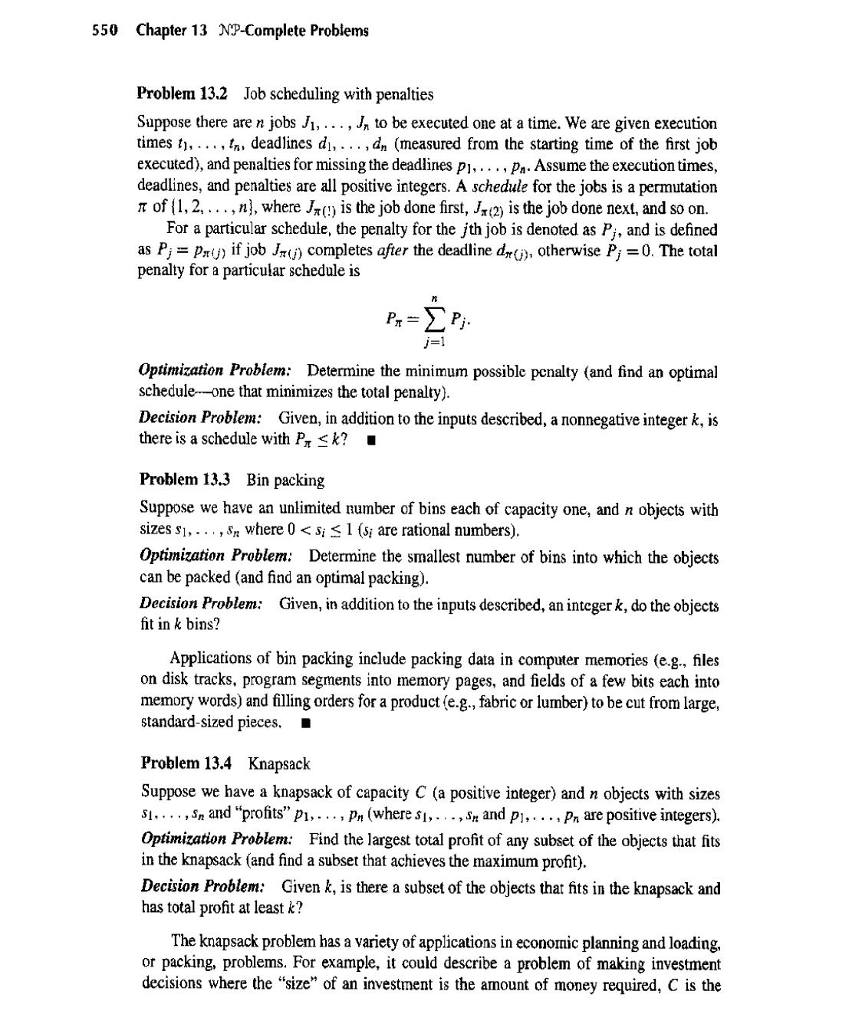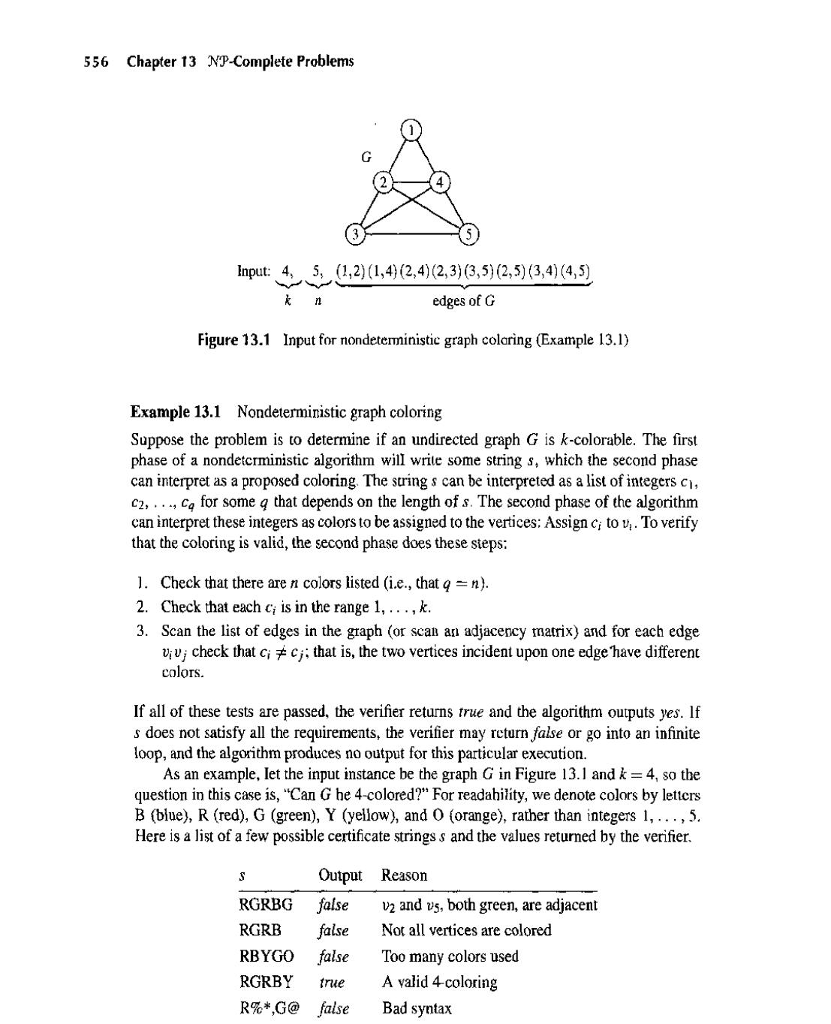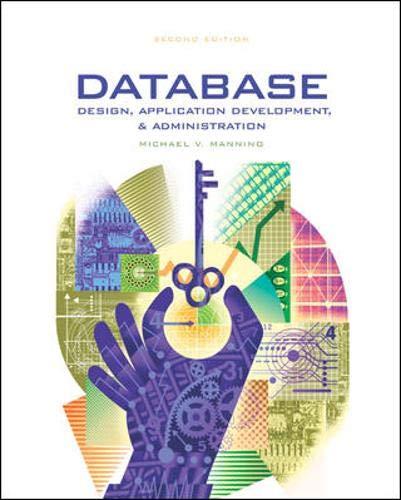Question
Prove that the Knapsack Problem (Problem 13.4, Page 550) is in NP. See Example 13.1 (Page 556) for the (partial) solution to a similar problem.
Prove that the Knapsack Problem (Problem 13.4, Page 550) is in NP.
See Example 13.1 (Page 556) for the (partial) solution to a similar problem.
[It would be a complete (rather than partial) solution if they had simply
computed the complexity of their 'second phase', and observed that the
complexity was bounded by a polynomial.] Exercise 13.4(b), another similar
problem, is solved in detail in the lecture notes.
Note that your algorithm only is supposed to CHECK a proposed solution,
not FIND a solution! Remember to refer to the 'checklist' in the notes and
do all FOUR things necessary to show a problem belongs to NP. The notes say:
To show a problem belongs to NP, you must do four things:
1) describe the encoding used for the instance
2) describe the encoding used for the certificate
3) describe the algorithm that will check if the certificate is a valid solution
4) analyze the time complexity of that algorithm.
If the complexity is (bounded by) some polynomial of the input size,
then the problem is indeed in NP.


Step by Step Solution
There are 3 Steps involved in it
Step: 1

Get Instant Access to Expert-Tailored Solutions
See step-by-step solutions with expert insights and AI powered tools for academic success
Step: 2

Step: 3

Ace Your Homework with AI
Get the answers you need in no time with our AI-driven, step-by-step assistance
Get Started


